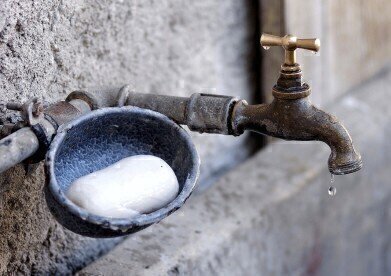Water/Wastewater
How Do Farmers Source Water?
Mar 02 2021
Did you know that over two-thirds of all freshwater resources on the planet are used for agricultural purposes? Farming is a thirsty business, especially if livestock are involved. The average lactating cow will require between 60 and 100 litres of fresh water every day, while a lactating sow or gilt will need between 15 and 30 litres of water. That’s an awful lot of H2O!
How, then, do farmers source their water? Well, 85% of farms in the UK are connected to a mains water supply. However, this is not always possible for more remote holdings, while the mains supply can become depleted or disrupted in times of drought, freezing pipes or heatwaves. For that reason, almost a third (31%) of British farms abstract water from watercourses, while a further 25% use boreholes to reach sources of the staff of life beneath our feet.
A difficult balancing act
The agriculture-water interface is of critical importance to the environment, given that the former depends upon the latter so heavily – and that the human race relies upon farming to feed its ballooning population. At the same time, agriculture has an uneasy relationship with the environment, contributing to deforestation, resource consumption and the emission of harmful greenhouse gases.
This makes managing the water supply on a busy farm a tricky feat to achieve. Not only must farmers do their best to transition to more sustainable methods of operation, but they must also ensure there are contingency plans in place in case of a supply interruption. That’s why having access to multiple sources – mains supply, watercourse abstraction and boreholes – is advisable in order to keep all bases covered.
Climate change making things harder
Managing water supplies is becoming a more difficult beast to tame than ever before in the 21st century, largely due to the challenges thrown up by global warming and climate change. As extreme weather events become more commonplace, the likelihood of a farm suffering an interruption to their water supply becomes more and more pronounced.
At the same time, rising temperatures mean that animals overheat and plants wilt more quickly. In order to ensure that both flora and fauna not only survive but thrive, ever greater amounts of water are required. Given that the global population continues to grow and climate change continues to deepen, those problems are only likely to become more entrenched as the years progress.
Monitoring abstraction is key
With the situation becoming ever more complicated, it’s absolutely vital that farmers implement adequate monitoring abstraction techniques for agriculture. Having access to national data on water supplies is key to affording individual farmers better oversight of their methods, meaning they can plan better and provide contingencies for all outcomes.
Meanwhile, farmers must also collect their own data on their water abstraction habits. This will allow insight into how, when and where water is being sourced, but will also demonstrate their compliance with the terms and conditions of their abstraction licenses. In a world where water has such a complex relationship with agriculture, monitoring must form the foundation of all future efforts to move towards a more sustainable tomorrow.
Digital Edition
IET 34.2 March 2024
April 2024
Gas Detection - Biogas batch fermentation system for laboratory use with automatic gas analysis in real time Water/Wastewater - Upcycling sensors for sustainable nature management - Prist...
View all digital editions
Events
Apr 30 2024 Melbourne, Australia
Apr 30 2024 Birmingham, UK
May 03 2024 Seoul, South Korea
May 05 2024 Seville, Spain
May 06 2024 Minneapolis, MN, USA


















